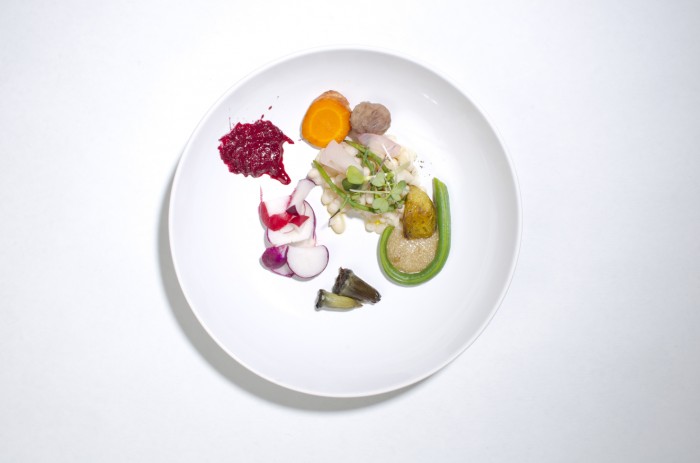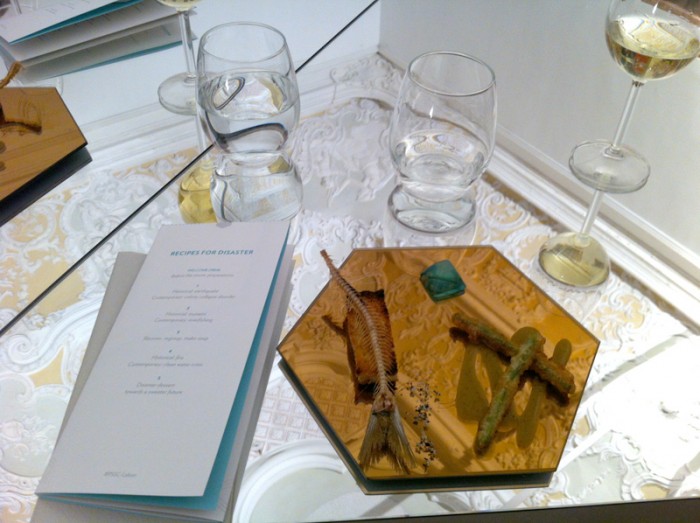
The Center for Genomic Gastronomy is an artist-led think tank that studies the biotechnologies and biodiversity of the human food system. We disseminate our research in the form of publications, exhibitions, lectures, recipes and meals. Our mission is to map food controversies, prototype alternative culinary futures and imagine a more just, biodiverse and beautiful food system. Since 2010 we have collaborated with hackers, chefs, scientists and farmers in Asia, Europe and North America.
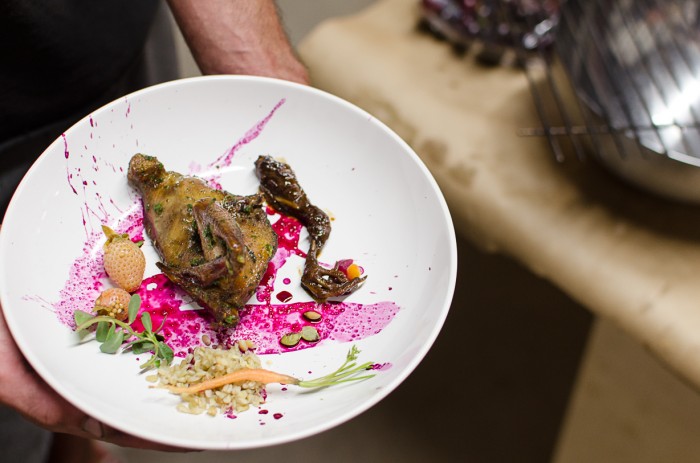
Hosting semi-regular supper club events forces our organization to assemble organisms, ingredients, language and people in new configurations. We develop recipes and meals to tell stories about big ideas, such as loss of agricultural biodiversity or radiation breeding. During the development process we meet suppliers, acquire new ingredients and work with chefs to test them in the kitchen. Creating new names, definitions and ideas is also part of the process of developing the event. Using food to tell stories is an interactive experience, where the guests are invited to ingest and digest different ways in which humans have sculpted the planet through food choices.
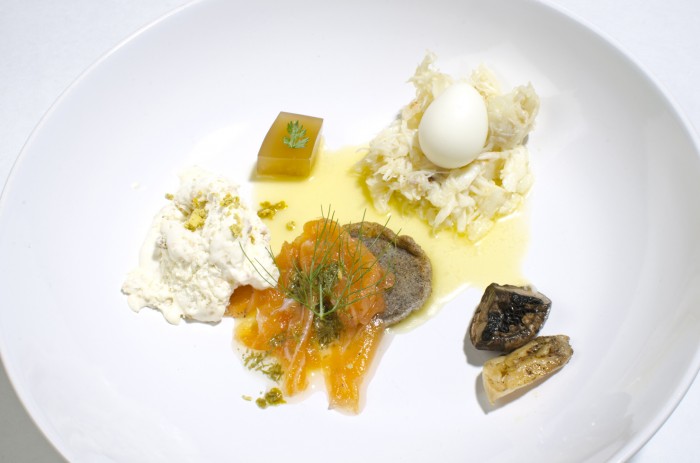
Thus far we have hosted this kind of dinner for between 12 and 150 diners. From 2010—2015 we created bespoke menus for Planetary Sculpture Supper Club events in Bangalore, Copenhagen, Dessau, Dublin, Leiden, London, Portland OR and Pittsburgh. In Lisbon, Portugal we ran the Planetary Sculpture Supper Club as a 3-month pop-up restaurant during the 2013 Lisbon Architecture Triennale.
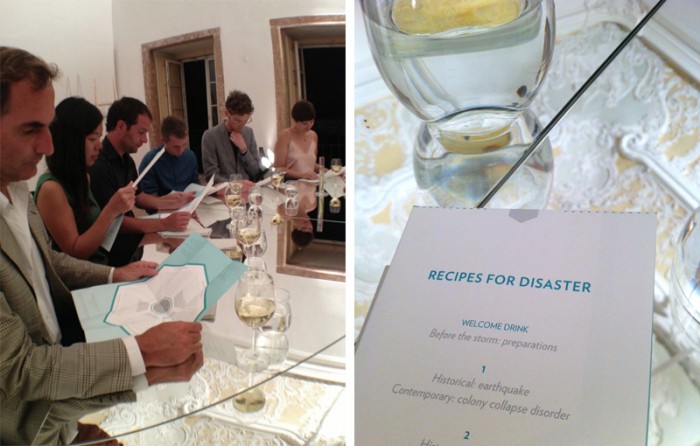
On our menus we describe the event this way:
The Planetary Sculpture Supper Club is a collection of foods, recipes and stories that typify some of the ways humans unconsciously sculpt the planet’s biosphere through eating habits, flavour preferences and food technologies. We hope this semi-regular Supper Club is an opportunity to explore the co-evolution of gastronomy and larger ecological, technological and political systems.
Animal and plant breeders have steered evolution for thousands of years. However, eaters and chefs ALSO exert selection pressures on the kinds of life forms and ingredients that are propagated within the eco-agro-culinary system. Human activities are driven in part by preferences, needs and desires. Taste matters. We make lots of choices based on aesthetics, beauty, disgust, and it would be foolish not to take these into account.
Every human eater slowly reformulates the planet as they consume it.

The daily choice we make about what to eat for dinner, whether it’s a fast food meal or a homegrown salad, impacts the diversity, abundance and distribution of life on the planet. Every time a food-secure eater chooses to eat one kind of food over another they make a small, downstream, but not insignificant selection pressure that privileges certain genomes to propagate on the planet. You, as an eater, are an agent of selection.
With a dramatic increase in the human population over the last century, and an increasing amount of land and planetary biomass dedicated to the human food system, human eaters are some of the most powerful forces of planetary sculpture.
WITHIN OUR GLOBAL CIVILIZATION AND GLOBAL FOOD SYSTEM, EATERS ARE AGENTS OF SELECTION. THE GENES, GENOMES AND INGREDIENTS THAT ARE PROPAGATED ARE THE ONES YOU PREFER TO EAT.
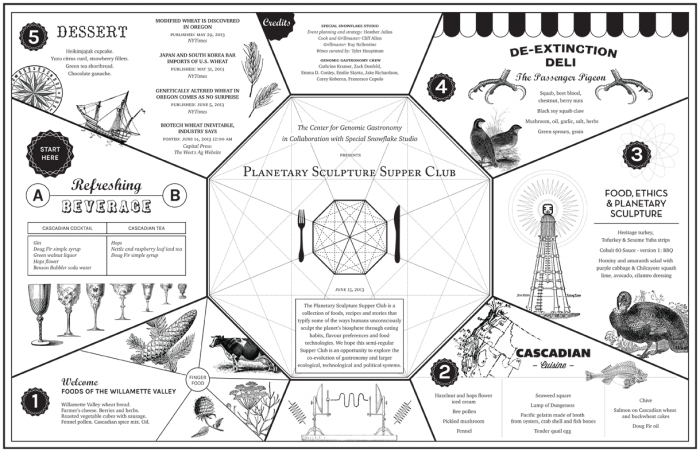
Planetary Sculpture may sound like an unusual concept, but for us it is the logical extension of two concepts: Josephy Beuys’ notion that everyone is an artist and the Fluxus idea that art = life. In the anthropocene, where human activity has a significant global impact on Earth’s ecosystems, humankind is reshaping the planet and leaving permanent marks. If every human is an artist, and we are collectively sculpting the planet, each of us is a planetary sculptor. Or as Buckminster Fuller said: “There are no passengers on spaceship earth. We are all crew.” Or as we have said “We Have Always Been GeoEngineers”, we are just not very good at it. So far. The Planetary Sculpture Supper Club is one technique we use for seeing, imagining and contextualizing our human food system on a planetary scale.
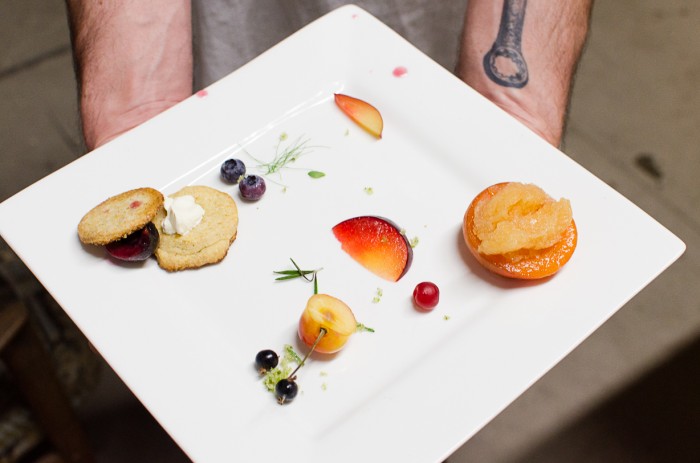
POSTFACE
In conducting this research The Center for Genomic Gastronomy has unearthed past visions of the future that outline how we could or should eat. Why were some movements and ideas successful while others failed? What are the fantastical images of the future of eating that can help us think through the present?
We’ve started to establish some definitions – that overlap and mingle – to guide our research for each new event:
Intentional Cuisines are planned cooking practices and communities that are goal-directed and designed as an alternative to dominant or normative cuisines.
E.G. Diet for a Hot Planet, Ministry of Food campaign during WWII
In Modernist Cuisine food follows function. Rationalist and reductionist scientific methods and tools are used to control and standardize chemical processes.
E.G. molecular gastronomy, functional foods, meal replacers
Utopian Cuisines are idealized food systems that are imagined by various communities. The term can apply to attempted intentional cuisines as well as fictional cuisines portrayed in the arts.
E.G. Pill foods
Extreme Cuisines: Lifestyles that are driven by political and/or environmental ideals that are challenging but not impossible to maintain over an entire human life-cycle under current food cultures.
